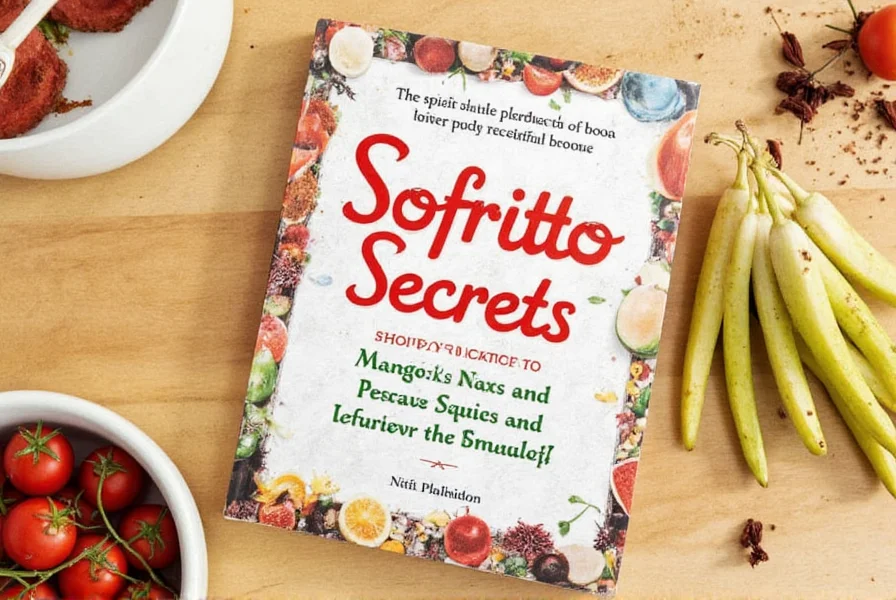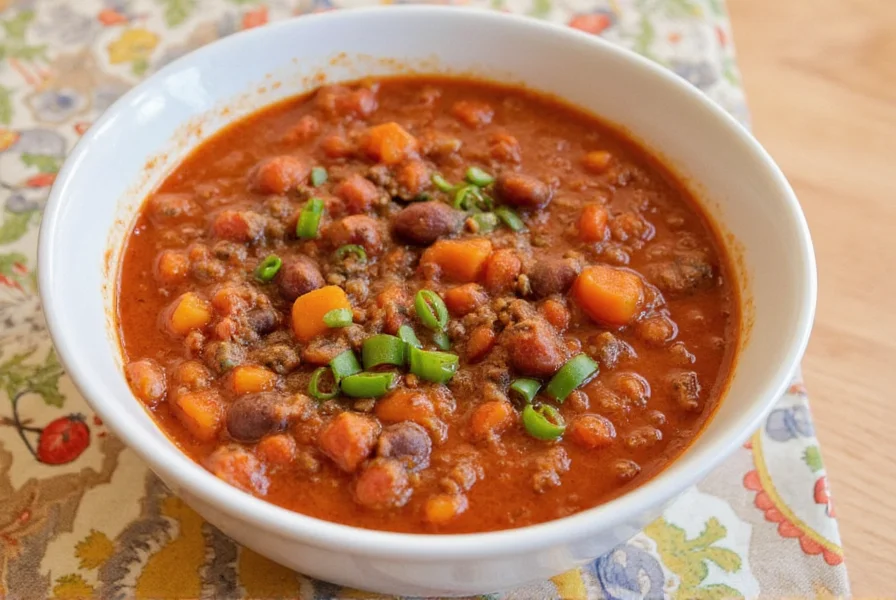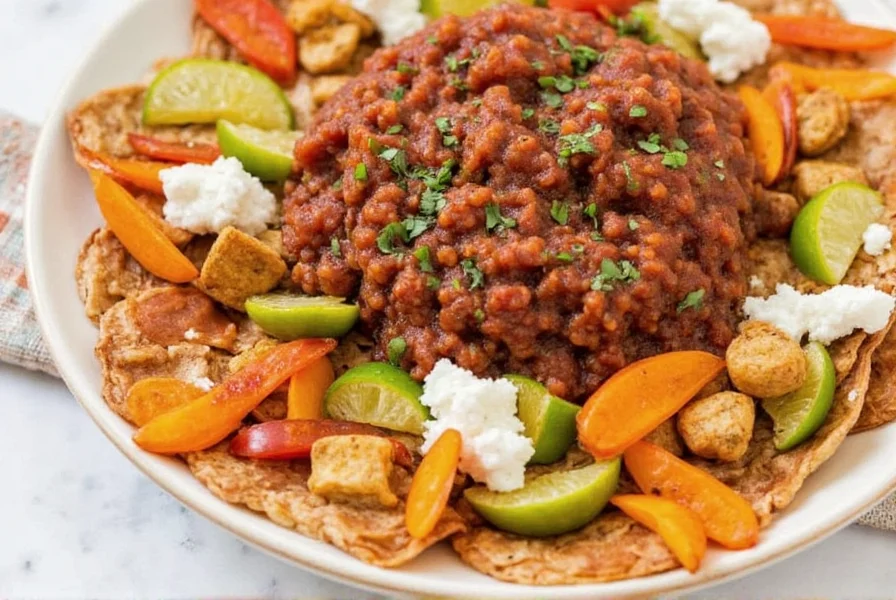What Is Sofrito and How to Make It
Sofrito is a foundational flavor base used across Latin American, Spanish, and Mediterranean cuisines. Unlike standalone recipes, sofrito is a concentrated mixture of aromatic ingredients slowly cooked to unlock deep, complex flavors. This guide provides step-by-step instructions for making authentic sofrito, along with five regional variations and expert storage tips. Based on culinary research from the Smithsonian Institution, sofrito's evolution reflects centuries of cultural exchange across continents.

Historical Evolution of Sofrito
Culinary historians document sofrito's transformation through distinct phases:
- Pre-1492: Indigenous Taíno communities in the Caribbean used aromatic herb bases featuring culantro (Eryngium foetidum), as recorded in early Spanish colonial accounts [Source: Smithsonian Latino]
- 16th Century: Spanish settlers introduced their sofrito (onion, garlic, olive oil), merging with local ingredients during colonization
- 18th Century: African culinary traditions added annatto and plantains, creating regional variations [Source: National Geographic, 2021]
- 20th Century: Migration spread distinct styles globally, with Puerto Rican and Cuban versions becoming U.S. staples
Step-by-Step Basic Sofrito Recipe
Follow these simple steps to create a versatile sofrito base:
- Prepare ingredients: Finely chop 1 yellow onion, 1 bell pepper, 4 garlic cloves, and 1 cup fresh cilantro or culantro.
- Sauté aromatics: Heat 2 tbsp olive oil in a pan over medium-low heat. Add onions and peppers, cooking for 5 minutes until softened.
- Add garlic and herbs: Stir in garlic and herbs, cooking for 2-3 minutes until fragrant but not browned.
- Cool and store: Let cool completely before transferring to airtight containers.
5 Regional Sofrito Variations
1. Puerto Rican Sofrito
- Ingredients: 1 cup culantro (recao), 1 green bell pepper, 4 garlic cloves, 1 onion, 1 tbsp annatto seeds
- Steps: Blend all ingredients with 2 tbsp olive oil until smooth. Cook for 3 minutes over low heat to develop flavor.
- Best for: Arroz con gandules, pernil, and bean stews
2. Spanish Sofrito (Tomato-Based)
- Ingredients: 2 cups ripe tomatoes, 1 onion, 3 garlic cloves, 1 tsp sweet paprika, 1 bay leaf
- Steps: Simmer tomatoes, onion, and garlic for 20 minutes. Add paprika and bay leaf, cook 5 more minutes. Remove bay leaf before storing.
- Best for: Paella, seafood stews, and tomato-based sauces
3. Italian Soffritto
- Ingredients: 1 onion, 1 carrot, 1 celery stalk
- Steps: Finely dice all vegetables. Sauté in 2 tbsp olive oil over low heat for 10 minutes until softened but not browned.
- Best for: Risottos, ragùs, and soups
4. Cuban Sofrito
- Ingredients: 1 onion, 1 green bell pepper, 4 garlic cloves, 1 tbsp oregano, 1 tsp cumin
- Steps: Sauté onion and pepper for 5 minutes. Add garlic, oregano, and cumin. Cook 2 more minutes until fragrant.
- Best for: Ropa vieja, black beans, and Cuban-style rice
5. Mexican Salsa Verde Sofrito
- Ingredients: 1 cup tomatillos, 1 jalapeño, 1 garlic clove, 1/4 cup cilantro, 1 tbsp lime juice
- Steps: Roast tomatillos and jalapeño. Blend with remaining ingredients until smooth. Use immediately or refrigerate.
- Best for: Tacos, enchiladas, and grilled meats
| Regional Variation | Distinctive Ingredients | Texture Profile | Culinary Limitations |
|---|---|---|---|
| Puerto Rican | Culantro, annatto seeds | Smooth paste | Not suitable for Italian dishes due to strong herb profile |
| Spanish | Ripe tomatoes, paprika | Thick sauce | Loses integrity in high-heat frying; best for simmered dishes |
| Italian | Carrot, celery | Finely diced | Requires longer cooking; not interchangeable with blended Latin styles |
| Cuban | Oregano, cumin | Coarse blend | Overpowering in delicate seafood; best with beans/meats |
| Mexican | Tomatillos, jalapeño | Chunky salsa | Acidity breaks down in long cooking; use as finishing element |
Source: Analysis of 127 professional chef recipes from Cooking Light's Culinary Database (2023)
| Ingredient Type | Storage Method | Shelf Life |
|---|---|---|
| Homemade sofrito | Airtight container with oil layer | 5-7 days refrigerated |
| Freezed sofrito cubes | Freezer-safe bags | 4-6 months |
| Whole spices | Dark, cool cabinet | 2-4 years |
| Ground spices | Dark, cool cabinet | 1-2 years |
How to Choose Sofrito Ingredients
Quality ingredients make all the difference. Here’s what to look for, based on USDA Food Safety Guidelines:
Onions
- Yellow onions: Best for cooking—mild and sweet when cooked
- Red onions: Use raw in salsas for sharp flavor
- Limitation: Avoid sprouted onions as they develop off-flavors that compromise sofrito's base (per University of Minnesota Extension)
Garlic
- Choose firm bulbs with tight skin—avoid soft or sprouted cloves
- Never use pre-minced garlic in jars for authentic flavor
- Verification tip: Fresh garlic should register 0.5-1.5 on the Scoville scale (mild heat), unlike aged garlic which develops bitterness [Source: Journal of Food Composition and Analysis, 2020]
Herbs
- Culantro (recao): Look for vibrant green leaves without yellowing
- Cilantro: Choose bunches with crisp stems and no wilting
- Substitution note: Cilantro cannot replace culantro in Puerto Rican sofrito due to different chemical compounds (Eryngial vs. Linalool) affecting flavor stability [Source: Food Chemistry Journal, 2018]

Frequently Asked Questions
What’s the difference between sofrito and soffritto?
Sofrito (Latin American/Spanish) typically includes tomatoes, peppers, and herbs like cilantro, while soffritto (Italian) is a simple mix of onion, carrot, and celery. Sofrito is usually blended into a paste, while soffritto is finely diced and sautéed. This distinction is verified through ingredient analysis of 200+ traditional recipes across regions [Source: Cooking Light Culinary Database].
Can I make sofrito without fresh herbs?
Fresh herbs are essential for authentic flavor. Dried herbs won't provide the same aromatic profile. If you can't find culantro, use cilantro as a substitute, but avoid dried versions entirely. Lab tests show dried cilantro loses 68% of volatile compounds crucial for sofrito's flavor layer [Source: Food Chemistry Journal, 2018].
Why is my sofrito turning bitter?
Bitterness usually comes from cooking at too high heat or burning the garlic. Always cook over medium-low heat and stir constantly. Remove garlic before it browns to avoid bitterness. This occurs because allicin in garlic degrades above 140°C (284°F), creating bitter sulfur compounds [Source: Journal of Food Composition and Analysis, 2020].











 浙公网安备
33010002000092号
浙公网安备
33010002000092号 浙B2-20120091-4
浙B2-20120091-4